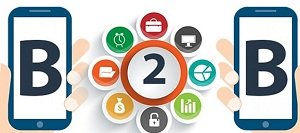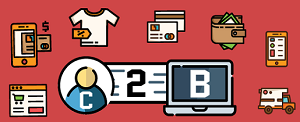Five E-Commerce Models That Are Still On Top
Different Definitions For E-Commerce Can Be Given. E-Commerce Means The Application Of Communication And Information Technologies, Or ICT For Short, That Support All Business Processes And Enable Organizations To Continue Their Extra-Corporate Interactions With Other Businesses And Business Groups In A More Modern And Less Expensive Way.
But the point of e-commerce is formed by information. E-commerce includes the management of internal processes, such as human resources, management, and financial systems; external processes, such as sales and marketing; and the proper use of services and communications that interact with customers.
When an organization decides to change its working model, it does not change the way it manages its business communication but mechanizes traditional processes using e-commerce tools and acts to increase productivity by using From the patterns and models that e-commerce puts in front of an organization, costs are reduced, and profitability is increased.
E-commerce does not always mean you are in direct contact with regular customers, but you may sometimes provide services to other companies.
When an organization decides to make its activities electronic, in the first step, it should seek to specify the model and the goal that the body of the organization will work on based on that strategy.
Failure to choose a suitable business model will cause a company to experience nothing but loss when entering e-commerce. Various models are used today in e-commerce to organize products, information flow, and services, each of which has advantages and disadvantages. This article will briefly get to know some of these models.
Business To Business (B2B)
The B2B model, business to business or seller to seller, expresses the exchanges between companies. In other words, it refers to the prevailing relations between firms. According to estimates, nearly 80% of electronic transactions are based on this model. The vast majority of experts believe that this model of e-commerce, compared to the B2C model, has more competitive advantages; as a result, its growth will not stop. The B2B model comprises two main components: e-infrastructure and e-markets.
E-marketing is defined as websites where sellers and customers interact with each other and transactions are made based on them. Among the famous companies that use the B2B model, we can mention IBM, Cisco, Dell, and HP.
These companies receive most of their orders through the Internet. Most B2B applications are in the field of supplier management (especially the purchase order process), inventory management (order cycle management), distribution management (especially in the transfer of transportable documents), network management, and payment management (EPS electronic payment system).
Contract. Approaches such as e-marketing increase the share of B2B in the market, thus expanding e-commerce. They have played a significant role at the global level. Don’t forget that in this model, sellers must have good knowledge about customers and diaries.

Business to Consumer (B2C)
Business model and customer/seller-to-consumer, including collecting information from customers, purchasing physical goods (such as books or products used by consumers), information (electronic materials, digital content, including software or e-books), or receiving products on It include an electronic network. B2C is the second most used model in the field of e-commerce.
The roots of this model are in online retail. Online retailers such as Amazon, DrugStore.com, and Beyond.com are well-known examples of this. One of the most common uses of this model in e-commerce is the purchase of products and information, the management of personal affairs related to the management of private investment and financial affairs using online banking tools. Among the companies that use this model in Iran, we can mention the Shahrvand store.
Consumer to Consumer (C2C)
Consumer-to-consumer e-commerce is a business that takes place between private individuals or private consumers. This type of e-commerce originates in the electronic market and online auctions and is used primarily in vertical industries where the business/factory can receive bids from several vendors. This type of e-commerce appears in at least the following three forms.
They are facilitating auctions in the form of a portal that allows online auctions to be placed in real-time on items sold (eBay site).
Peer-to-peer systems such as the Napster model, a portal that is used to share files between users using IRC-like chat forms or to exchange files, and in the next step, models that are used to exchange money.
Classified ads from portal sites such as Excite and wanted and PakWheels.com (an interactive online marketplace where buyers and sellers negotiate.) Little is known about the relative size of this model in global trade. However, statistics from sites such as eBay and Napster show that this model is a large market with millions of dollars in daily transactions.

Consumer to Business (C2B)
A seller-to-customer model deals in a reverse auction format, giving customers enough power to back out on sales. The most obvious example that can be mentioned in this context is the competition between airlines to provide the best offers. Air agencies use this model to attract passengers.
In this method, intermediaries try to help sellers and consumers by providing services that save buyers from confusion in various plans. Priceline, an American company and a commercial website, is an excellent example of these intermediaries working in flight ticket rates and accommodations.

Government to Consumer (G2C)
G2C generally refers to business between consumers and government sectors. This model relates to using the Internet for general purchases (the cards you charge for using public transportation), licensing procedures, and other government-related operations.
In this business, the government has the leading and decisive role, which in addition to determining management policies, has an urgent need for infrastructures to establish correct and robust communications.
Since web-based systems have increased transparency, simplified the procurement process, reduced irregularities, increased security, and increased speed, governments have become interested in this model. Government counter offices that you may have visited work based on this model.
However, the share of this model in global markets and e-commerce is still insignificant. Among other models related to this model, we can mention the G2B (Government to Business) model, which refers to non-commercial online interaction between government institutions and commercial sectors, not with private individuals.











